
E Bike Torque Sensor vs Cadence Sensor: Key Differences Explained
When comparing an e bike torque sensor vs cadence sensor, the main differences come down to how each system measures your pedaling and delivers motor assistance. A torque sensor adjusts power based on how hard you push the pedals, while a cadence sensor activates assistance depending on pedal rotation. These variations can significantly affect ride smoothness, battery efficiency, and overall comfort. Understanding these key differences helps you choose the best setup for your riding style.
Cadence Sensor Explained: How It Works

A cadence sensor is one of the most common systems found on e-bikes, especially in entry-level and mid-range models. Instead of measuring pedal pressure, it tracks the rotation of the crank arms to determine when and how much motor assistance to provide. Simply put, as long as the pedals are moving, the motor delivers power.
The faster you pedal, the more consistent the motor support feels. If you slow down or stop pedaling, the assistance reduces or cuts off entirely. This makes cadence sensors straightforward and user-friendly, especially for casual riders who prefer a steady flow of assistance without putting in too much effort.
Advantages of a cadence sensor
One of the biggest benefits is simplicity. Cadence sensors are easy to use and generally more affordable, making them ideal for riders new to e-bikes. Paired with selectable assist levels, they allow you to control how much extra push you want from the motor. This means you can cruise at higher speeds with minimal exertion, as the system doesn’t require heavy pedaling force to activate.
Disadvantages of a cadence sensor
On the flip side, some riders find the riding experience less natural compared to a traditional bike. Because power is based only on pedal rotation, not force, it can feel slightly disconnected from your effort. There may also be a short delay before the motor kicks in, particularly noticeable when starting from a stop or climbing uphill. This lag can make quick starts or steep inclines more challenging if you’re relying heavily on the assist.
Torque Sensors: Function and Benefits
A torque sensor is designed to measure how much pressure you apply to the pedals rather than just how fast they turn. Using sensitive strain gauges, it detects the force from your legs and adjusts the motor assistance proportionally. The harder you push, the more power the motor provides, closely mimicking the feel of a traditional bike but with an amplified boost.
Advantages of a torque sensor
The biggest advantage is the natural riding experience. Because the motor output directly responds to your pedaling force, it feels smooth and intuitive, almost like an extension of your own effort. This system also tends to be more energy-efficient, since assistance is only delivered when you apply real force. As a result, many riders find that bikes with torque sensors can cover longer distances on a single battery charge.
Disadvantages of a torque sensor
Torque sensors are more complex and come at a higher cost compared to cadence systems, which can increase the price of the e-bike. They also require you to put in more effort to unlock maximum assistance, which may not suit riders who prefer effortless cruising. For those who want to arrive at work sweat-free or ride with minimal physical strain, the responsive nature of a torque sensor might feel less convenient than the always-on support of a cadence sensor.
Torque Sensor vs. Cadence Sensor: Key Differences

Comparing an e bike torque sensor vs cadence sensor highlights important distinctions that directly affect performance, comfort, and efficiency. Each system has its strengths, and knowing how they differ will help you choose the right one for your riding style.
1. Responsiveness and Ride Feel
Cadence sensors measure pedal rotation and activate motor support accordingly. This makes them reliable but less refined, as assistance doesn’t change with pedal pressure. Torque sensors, however, constantly analyze the force applied to the pedals, creating a smoother, more intuitive response that mirrors your natural effort. Riders who want a realistic cycling feel typically prefer torque-based systems.
2. Complexity and Maintenance
Cadence sensors are simple to set up, easy to replace, and often come on hub-drive motors, making them more accessible for beginners. Torque sensors, in contrast, are usually paired with mid-drive systems and may require professional servicing. Their advanced technology adds precision but also increases installation complexity.
3. Energy Efficiency
Because cadence sensors provide steady assistance regardless of rider input, they can drain the battery faster, especially on longer rides. Torque sensors are more efficient since they adjust support in real time based on effort, allowing you to get more miles out of each charge. This makes them a smart choice for riders who prioritize range and battery life.
4. Price Considerations
Cadence sensors are generally more affordable, keeping overall e-bike costs down. Torque sensors add to the expense due to their complexity and integration with mid-drive motors, but the investment can pay off in efficiency, range, and overall ride quality.
Best Use Cases for Cadence Sensors
-
City Commuting: Perfect for flat, urban environments where consistent support is useful.
-
Leisure Riding: Great for casual cyclists who value steady assistance with minimal effort.
-
Beginner Riders: Ideal for those new to e-bikes thanks to their straightforward operation.
-
Fitness Goals: Support steady, low-effort pedaling for cardiovascular workouts.
Best Use Cases for Torque Sensors
-
Mountain Biking: Essential for off-road trails where quick response to pedal force is needed.
-
Hilly Commutes: Provides efficient climbing power that adjusts naturally to terrain.
-
Long-Distance Touring: Maximizes battery range while adapting to varying conditions.
-
Performance Training: Offers precise responsiveness for serious cyclists and athletes.
iHoverboard E-Bikes – Smart Cadence Sensor Technology for Effortless Riding
iHoverboard e-bikes come equipped with advanced cadence sensors, delivering smooth and consistent pedal-assist power that adapts to your pedaling speed. Perfect for city commuting, leisure rides, or foldable convenience, these bikes provide a reliable and user-friendly ride without the need for extra effort. Unlike torque sensors, cadence sensors engage the motor at preset levels, making every journey effortless and predictable. Whether you’re navigating urban streets, tackling hills, or enjoying weekend adventures, iHoverboard e-bikes combine comfort, efficiency, and cutting-edge design for an enhanced cycling experience.
Key Specs by Model:
U1 / U3 Folding
-
Motor: 500W (U1) / 350W (U3) Peak 500W
-
Battery: 36V 7.8Ah (281Wh)
-
Range: 25–40 miles (40–65 km)
-
Top Speed: 20 mph (32 km/h) / 15.5 mph (25 km/h)
-
Weight: 52 lbs (23.7 kg) / 45 lbs (20.5 kg)
-
Tires: 14×1.95" (U1) / 16×2.1" (U3)
-
Suspension: Rear (U1) / Front (U3)
-
Brakes: Dual Disc (Hydraulic for U1) / Dual Disc (U3)
-
Features: Foldable, intelligent display, adaptive motor
U2 Ucity Step-Thru
-
Motor: 500W (Rated 250W)
-
Battery: 36V 7.8Ah (281Wh)
-
Range: 22–28 miles (35–45 km)
-
Top Speed: 15.5 mph (25 km/h)
-
Weight: 45 lbs (20.5 kg)
-
Tires: 16×2.1"
-
Suspension: Front
-
Brakes: Dual Disc
-
Features: Step-thru design, city-focused
U4 Low Step-Through
-
Motor: 500W (Rated 250W)
-
Battery: 36V 10.4Ah (374Wh)
-
Range: 35–55 miles (55–90 km)
-
Top Speed: 20 mph (32 km/h)
-
Weight: 58 lbs (26.5 kg)
-
Tires: 16×2.15"
-
Suspension: Front
-
Brakes: Dual Disc
-
Features: Foldable, low-step design, 3+1 assist modes
M10 / EB3 All-Terrain
-
Motor: 500W (Rated 250W)
-
Battery: 36V 10.4Ah (378Wh)
-
Range: 44–60 miles (70–100 km)
-
Top Speed: 22 mph (35 km/h)
-
Weight: 55 lbs (24.8 kg)
-
Tires: 26×1.95"
-
Suspension: Front Fork
-
Brakes: Mechanical Disc
-
Features: MTB style, Shimano 7-speed, LCD display
How to Pick the Right Sensor for Your E-Bike
When deciding between a torque sensor and a cadence sensor, the best choice depends on how and where you plan to ride. If your cycling is mostly city commutes or relaxed weekend rides on flat terrain, a cadence sensor is often more than enough. For riders tackling hills, long distances, or off-road adventures, the responsive nature of a torque sensor may be the better fit.
It’s also important to weigh cost and efficiency. Cadence sensors keep the upfront price lower and are easier to maintain, but they may use more battery power over time. Torque sensors are more expensive at purchase yet often pay off by providing smoother performance, better energy efficiency, and a ride experience that feels closer to a traditional bike.
Whenever possible, try both systems before making a decision. A short test ride can reveal a lot about how naturally each sensor type responds to your pedaling style. Experiencing the difference firsthand will give you confidence that you’re choosing the right sensor for your comfort, fitness goals, and riding environment.
Riding Experience Compared
Choosing between a torque sensor vs cadence sensor has a major impact on how your e-bike feels on the road or trail. Here’s what riders can expect with each system:
Riding with a Cadence Sensor
-
Provides steady and predictable motor assistance as long as the pedals are turning.
-
Ideal for casual riders, commuters, and leisure cycling on flat or gently rolling terrain.
-
Simple to use, requiring little effort to maintain speed.
-
Can feel less natural since assistance isn’t tied to how hard you pedal, which may seem disconnected compared to a regular bike.
Riding with a Torque Sensor
-
Responds instantly to the pressure you apply to the pedals, delivering a smoother and more natural ride.
-
Makes climbing hills, accelerating, and tackling uneven terrain much easier.
-
Closely mimics the feel of traditional cycling, appealing to experienced riders and performance-focused cyclists.
-
Creates a more engaging experience but requires more physical input to unlock maximum motor support.
Impact of Cadence and Torque Sensors on Battery Life
The type of sensor your e-bike uses can directly affect how long your battery lasts on a single charge.
Cadence Sensors and Battery Use
-
Cadence sensors provide assistance at fixed levels whenever the pedals are turning.
-
Because the motor doesn’t adapt to how hard you’re pedaling, it may supply more power than you actually need.
-
This constant output can drain the battery faster, especially on long rides or when riding at higher assist levels.
Torque Sensors and Battery Use
-
Torque sensors deliver power based on your actual pedaling effort, adjusting in real time.
-
Since the motor only supplies the exact amount of support required, energy use is optimized.
-
This efficiency often translates to longer range, making torque sensors the better option for riders covering long distances or hilly terrain.
In short, cadence sensors can use up more battery due to their fixed support levels, while torque sensors help conserve energy by responding precisely to rider input.
Cost Comparison: Torque Sensor vs. Cadence Sensor
The cost of an e-bike can vary widely depending on the type of sensor it uses, but there are general trends that help highlight the differences.
Cadence Sensor Costs
-
Cadence sensors are inexpensive to produce, which is why they are commonly found on more affordable e-bikes.
-
If purchased separately, basic cadence sensors can often be found for as little as €10–€20, making them accessible and budget-friendly.
-
Their simplicity also means fewer maintenance costs over the bike’s lifetime.
Torque Sensor Costs
-
Torque sensors are more advanced, often integrated into the bottom bracket or crank system.
-
Standalone torque sensors typically start at around €50 and can reach several hundred euros depending on the model and quality.
-
Because they are usually paired with mid-drive motors, the overall cost of an e-bike with a torque sensor is generally higher.
In summary, cadence sensors keep the entry cost of an e-bike low, while torque sensors raise the price but offer greater efficiency, smoother performance, and a more natural ride feel.
iHoverboard Electric Bikes in Comparison
|
Spec |
||||
| Image |  |
 |
 |
 |
|
Motor |
500W |
350W (Peak 500W) |
500W (Rated 250W) |
500W (Rated 250W) |
|
Battery |
36V 7.8Ah (281Wh) |
36V 7.8Ah (281Wh) |
36V 10.4Ah (374Wh) |
36V 10.4Ah (378Wh) |
|
Range |
25–40 miles (40–65 km) |
22–28 miles (35–45 km) |
35–55 miles (55–90 km) |
44–60 miles (70–100 km) |
|
Top Speed |
20 mph (32 km/h) |
15.5 mph (25 km/h) |
20 mph (32 km/h) |
22 mph (35 km/h) |
|
Weight |
52 lbs (23.7 kg) |
45 lbs (20.5 kg) |
58 lbs (26.5 kg) |
55 lbs (24.8 kg) |
|
Load Capacity |
264 lbs (120 kg) |
265 lbs (120 kg) |
264 lbs (120 kg) |
330 lbs (150 kg) |
|
Tires |
14×1.95" |
16×2.1" |
16×2.15" |
26×1.95" |
|
Suspension |
Rear Suspension |
Front Suspension |
Front Suspension |
Front Fork Suspension |
|
Brakes |
Dual Disc (Hydraulic) |
Dual Disc |
Dual Disc |
Mechanical Disc |
|
Rider Height |
4’9”–6’1” (150–185 cm) |
5’1”–6’2” (155–188 cm) |
5’3”–6’3” (160–192 cm) |
5’3”–6’5” (160–195 cm) |
|
Notes |
Foldable, intelligent display, adaptive motor |
Step-thru, city-focused |
Foldable, low-step, 3+1 modes |
MTB style, Shimano 7-speed, LCD display |
Conclusion
When it comes to choosing between a torque sensor vs cadence sensor, the right option depends on your riding style, terrain, and personal preferences. Cadence sensors offer simplicity, affordability, and consistent assistance, making them perfect for casual riders and daily commuters. Torque sensors, on the other hand, provide a smoother, more natural cycling feel with better efficiency and responsiveness, ideal for longer rides, hilly routes, and performance-oriented cyclists.
At iHoverboard, we design e-bikes equipped with advanced technology to suit every type of rider. Whether you’re looking for the ease and reliability of a cadence sensor system or the precision and power of a torque sensor, our range of e-bikes ensures you’ll find the perfect match for your lifestyle. Explore our collection today and experience the freedom, comfort, and performance that only iHoverboard e-bikes can deliver.





































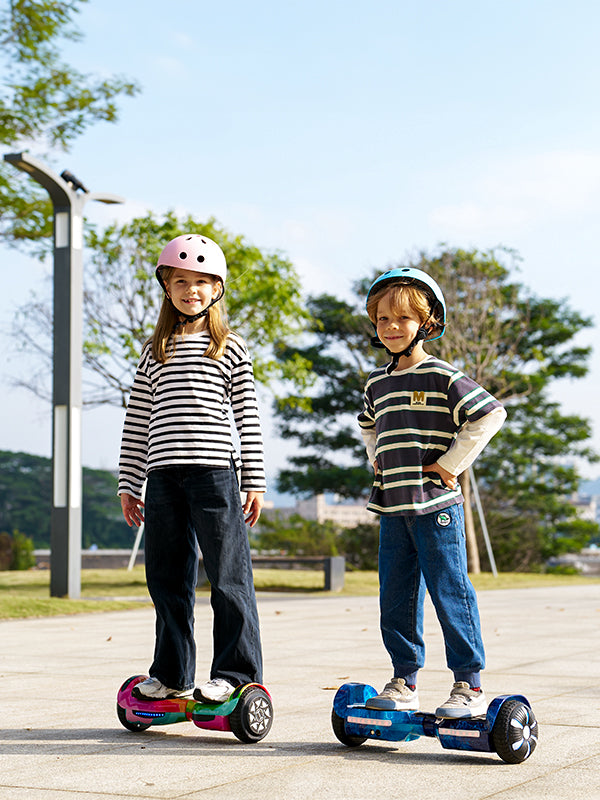




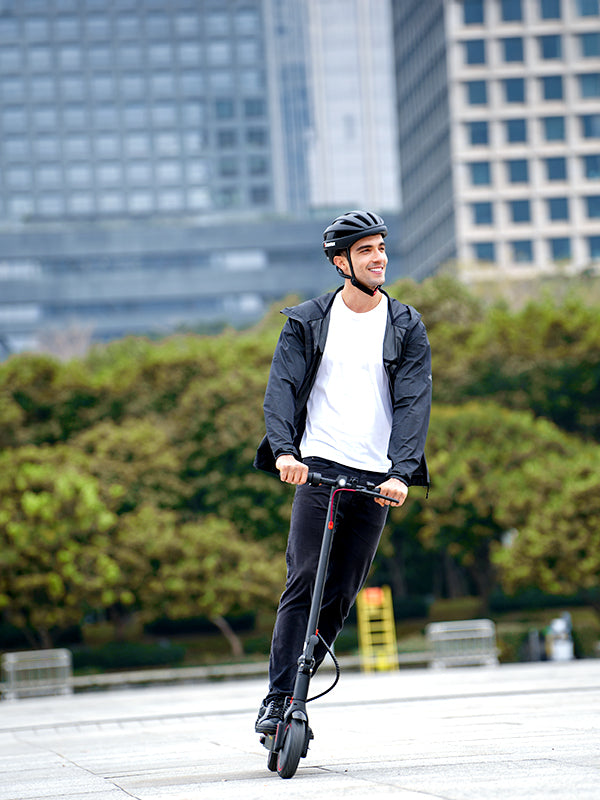


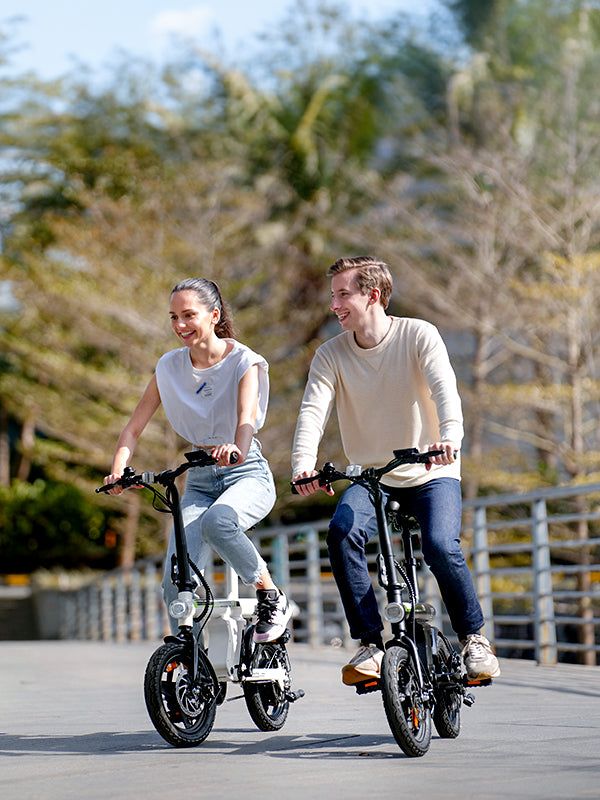

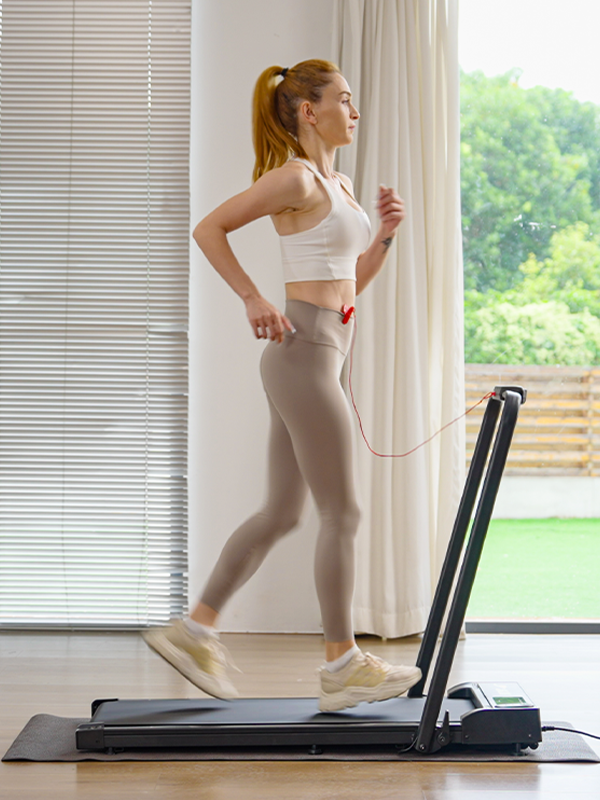





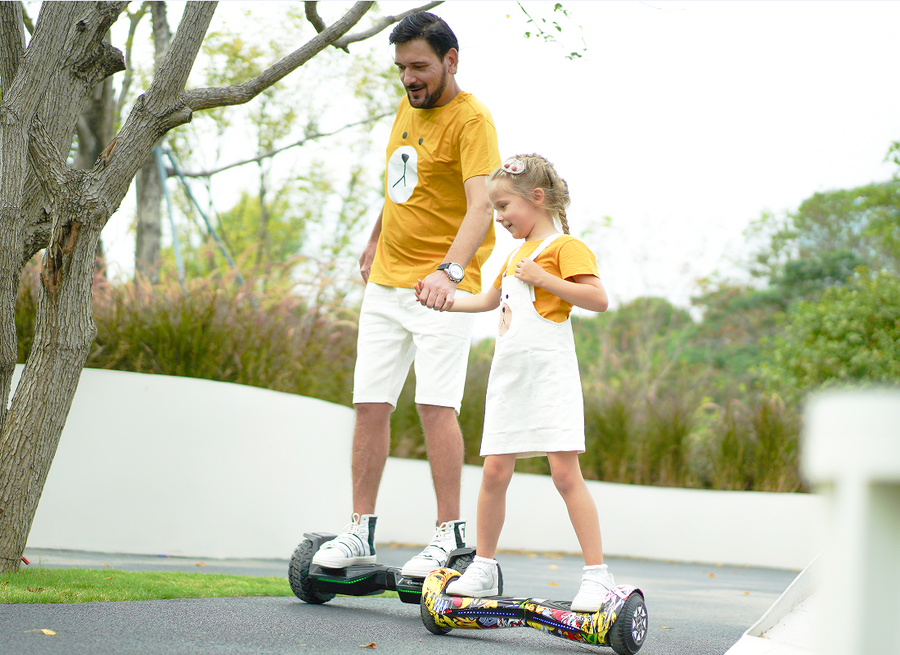
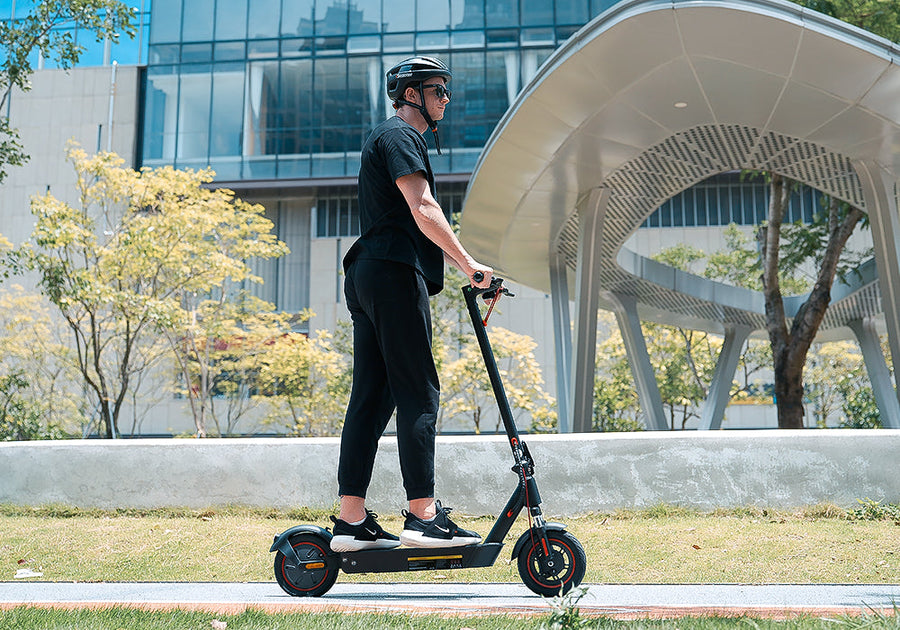

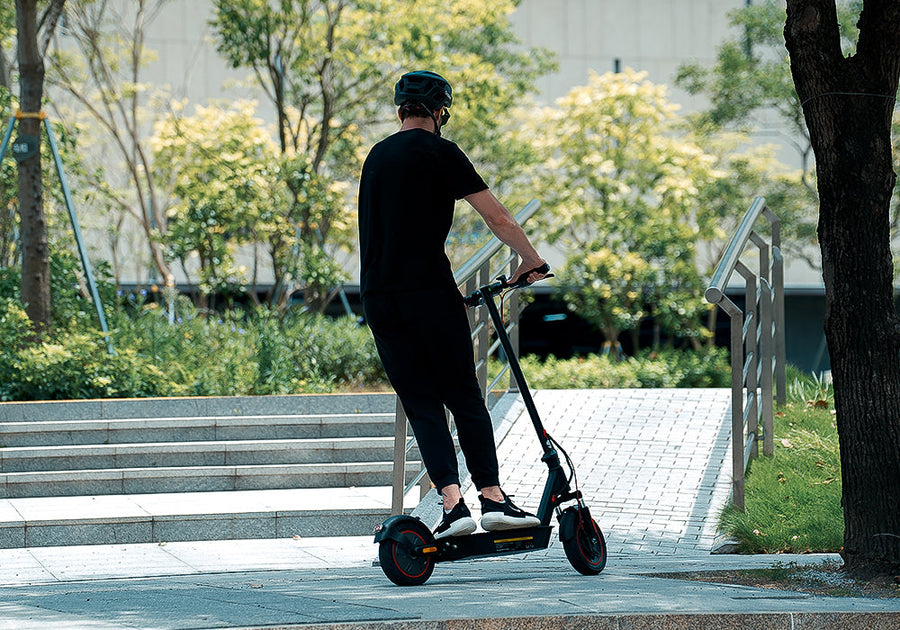


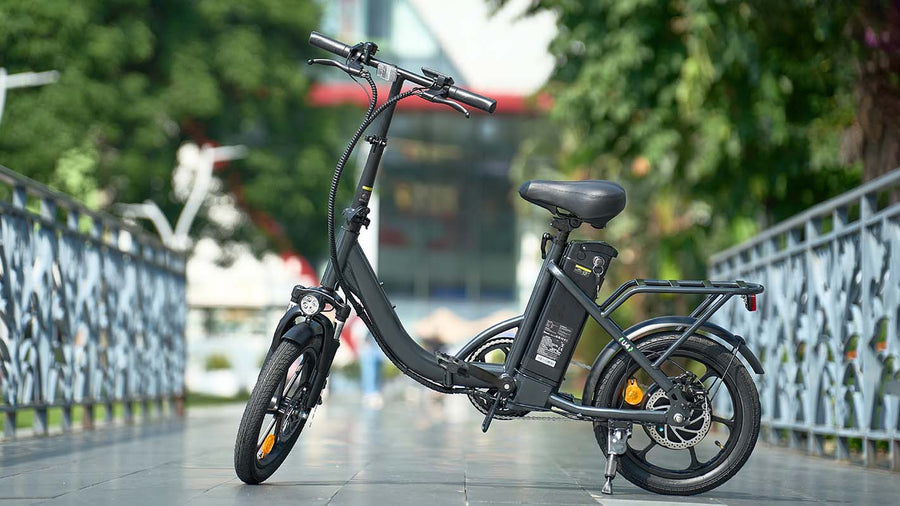
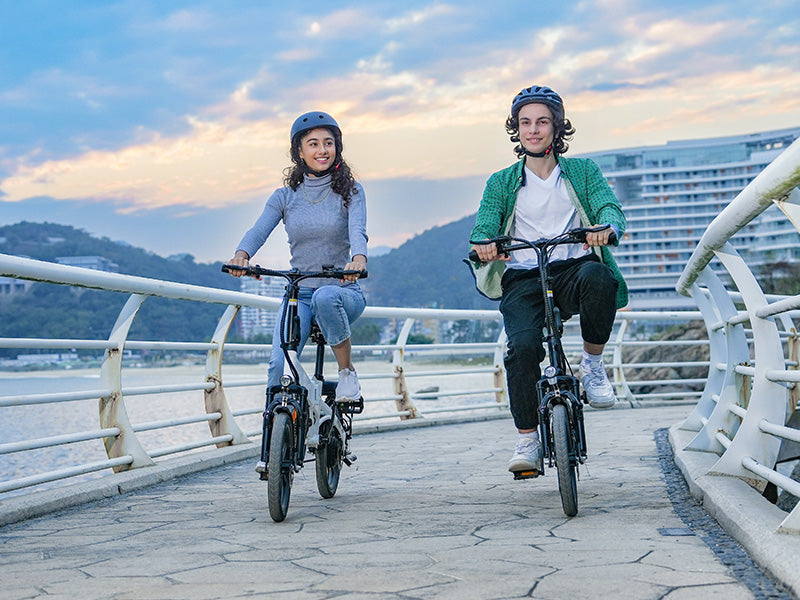
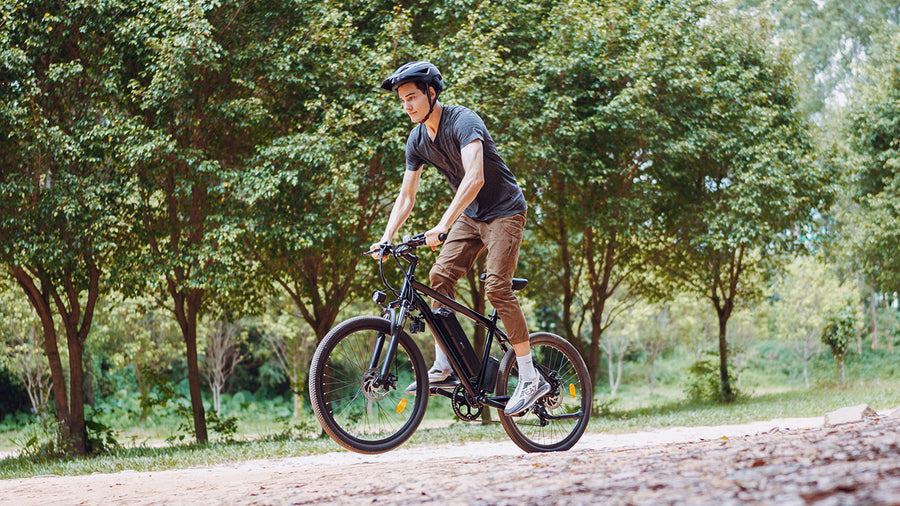







Still, need help? Contact Us: support@ihoverboard.com
What's the option? Check out the option now!
Leave us a message